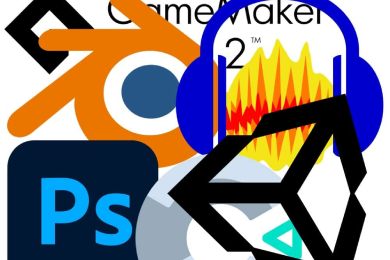When it comes to graphics APIs, there’s no doubt that OpenGL is a veteran. It was introduced in the 1990s, has gone through several iterations, and is still used by developers today.
But things are also changing fast, with new APIs entering the market almost every day. Newer graphics APIs like Vulkan and DXR have gained much traction, especially among game developers who value performance over ease of use.
What does this mean for OpenGL? Is it dead?
Well… maybe not just yet! Let’s take a look at what’s been happening with OpenGL recently, as well as its prospects in the near future.
What’s New With OpenGL?
There hasn’t been a lot of activity around OpenGL as of late. The Khronos Group (the open standards organization behind OpenGL) last update was in 2017 with version 4.6 of the API.
This new version brings some significant advancements, such as:
- OpenCL 2.2 support
- OpenGL has now natively integrated with the OpenCL framework.
- Developers can now write code for parallel processing for both OpenCL and graphics APIs in the same way.
- New visualization features.
- OpenGL 4.6 now comes with support for OpenXR, a cross-vendor API for 3D visualization. This means that you can use the same visualization code for your AR/VR app regardless of the hardware and software stack.
- Improved texture and data handling.
- OpenGL now supports texture addressing that takes into account texture filtering, UV co-ords, wrapping, and tiling.
- OpenGL 4.6 also supports more texture types, such as floating point textures and integer textures.
Is OpenGL Dead?
As we mentioned above, there’s no doubt that OpenGL is a veteran graphics API and that it has been a while since its last update.
But that doesn’t mean it’s dead or even dying.
OpenGL, like DXR and Vulkan, is a cross-platform graphics API that can be used across operating systems and hardware.
And while Vulkan and DXR provide their own set of advantages, OpenGL is still the most widely used graphics API out there.
In fact, according to the latest numbers, about 80% of the world’s games are still being developed with OpenGL.
There are several reasons for this.
For starters, OpenGL has been the de facto standard for 3D graphics development since the 1990s so is a well-established platform among developers. Plus, OpenGL has a simple yet powerful interface that can be used to create stunning graphics. Finally, OpenGL has been refined over the years to address many of the pain points associated with software development.
Why is Everyone Talking About Vulkan and DXR?
Vulkan and DXR (or the DirectX Raytracing API) have been around for a while now, with Vulkan being introduced in 2015, followed by DXR in 2018.
Vulkan is a cross-platform graphics API developed by the Khronos Group that aims to provide low-overhead access to the GPU.
DXR, on the other hand, is a specialized API built on top of DX12 that is optimized for real-time ray-traced rendering.
Both APIs are being pushed by their respective companies as the next-generation graphics API.
Why?
Well, for one thing, they address many of the pain points associated with OpenGL. Vulkan, for instance, is much more mature than OpenGL, offering a simpler API and full support for multi-core systems.
DXR, on the other hand, offers a more specialized set of features designed for real-time ray tracing. Given the advantages these APIs offers, many companies are choosing to adopt Vulkan and DXR for their future products, especially high-end gaming hardware. This has naturally led to a lot of talk about these APIs.
Where Does OpenGL Go From Here?
It’s clear that OpenGL is still a relevant graphics API used by developers today. But this doesn’t mean it’s the only choice out there.
The real question is – which graphics API do you choose?
While Vulkan and DXR are making their way into the market, OpenGL still remains the standard graphics API for most developers.
This means that it will likely go through a transformation in the coming years. And this transformation may well be a necessary one. Some have even suggested that OpenGL be forked into two separate APIs – one for game development and another for professional graphics.
This way, OpenGL can continue to serve both professional and gaming communities, while also providing developers with a more streamlined development experience.
What’s more, with the rise of GPUs in AI and machine learning, a standardized AI/ML graphics API can also be introduced. The goal of these APIs is to make it easier for developers to create stunning graphics and immersive visual environments.
Conclusion
All in all, it’s clear that though Vulkan and DXR have made their mark in the industry, OpenGL is still very much in the race. This doesn’t mean, however, that OpenGL doesn’t need some improvement.
In fact, a lot of work is being done to further evolve the graphics API. And this is likely to only continue with the growing adoption of GPUs in AI and machine learning.
Will this be enough to keep the veteran OpenGL in the race?
Only time will tell.
In the meantime, what do you think about OpenGL? Is it still relevant in today’s industry? Let us know in Discord!



2 thoughts on “Is OpenGL Dead? The Debate Continues!”
Comments are closed.